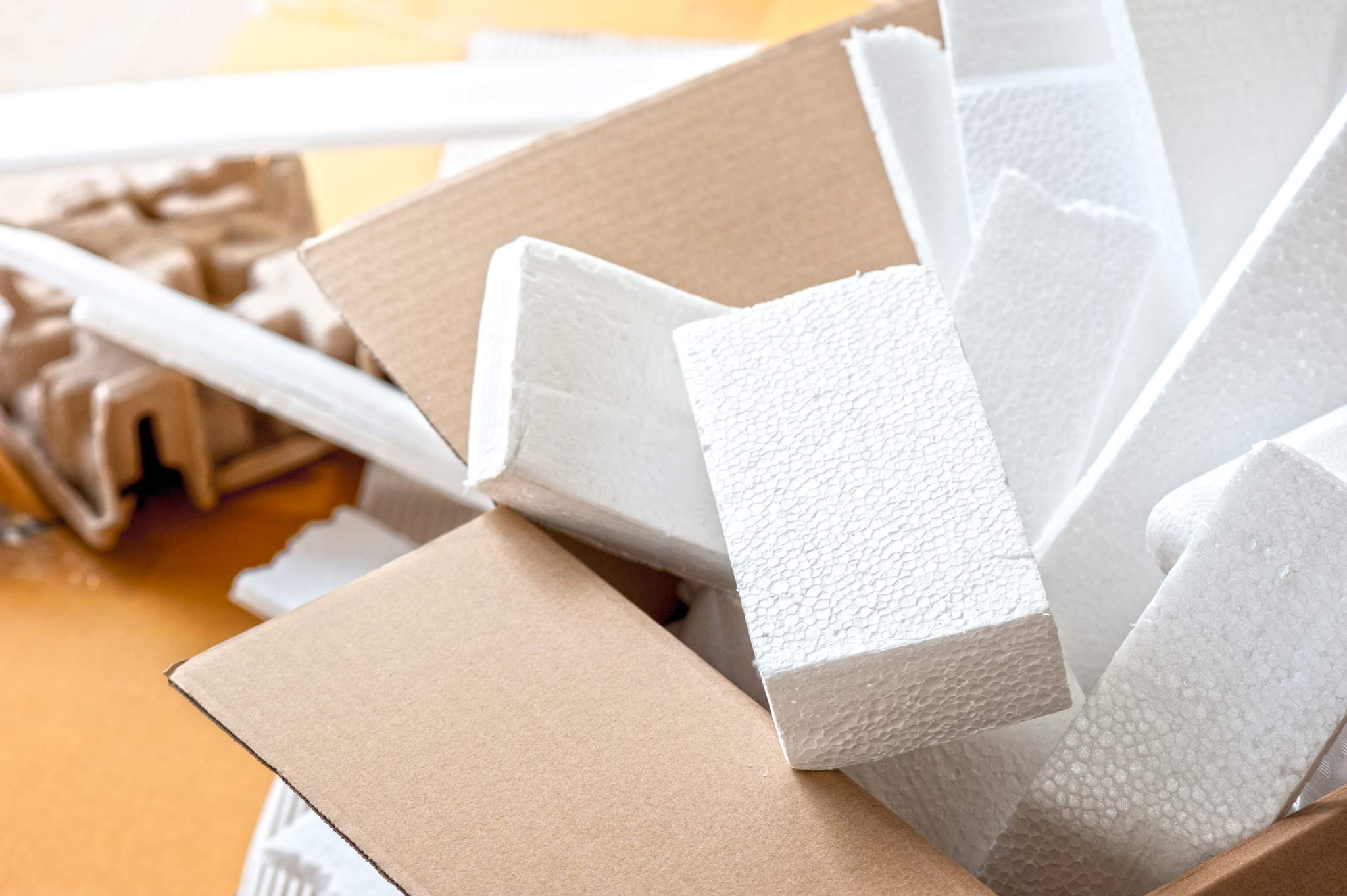Fiber Molded Products vs Styrofoam – How do they Compare?
Posted on: February 26th, 2020

Polystyrene, which is the chemical name for an entire family of plastics, was first discovered back in 1839 by Eduard Simon, an apothecary from Berlin. But it wasn’t until the 1940s that it was first formed into its more popular state, known by millions today as “styrofoam”.
For years, it’s been the protective packaging choice for manufacturers shipping their products globally. It’s inexpensive, lightweight, customizable, and durable – guaranteeing products arrive to customers as they were intended.
But while it’s a seemingly good solution for manufacturers, the chemical composition of styrofoam is less than ideal for the environment.
Styrofoam is not recyclable in your curbside recycling bin due to the costs to clean and process it, as well as a limited market for the end product. That means styrofoam packaging ends up out in the environment where it’s estimated to take some 500 years (or more) to break down, while leaching harmful chemicals into the atmosphere.
According to a report from the University of Southern Indiana, about one-third of an average dump is made up of packaging materials. “The U.S. is the #1 trash-producing country in the world at 1,609 pounds per person per year. This means that 5% of the world’s people generate 40% of the world’s waste.”
Many environmentally conscious manufacturers are beginning to turn to sustainable fiber as a solution for their protective packaging needs and with good reason. According to the EPA’s most recent study, approximately 44.2 million tons of paper and paperboard were recycled in 2017 for a recycling rate of 65.9%, which was among the highest compared to other materials in MSW (municipal solid waste).
Below we compare and contrast the features and benefits of styrofoam and fiber as a solution for your protective packaging needs. You’ll be surprised how it compares in cost, weight, customization, and durability.
Manufacturing:
Fiber: produced in a closed-loop water recycling facility, thereby eliminating wastewater discharge and lowering energy use. Fully customizable.
Styrofoam: produced using a mixture of petroleum-based polystyrene and a gasoline agent that requires high heat and energy use. Fully customizable.
Environment:
Fiber: fully recyclable and biodegradable.
Styrofoam: will never biodegrade, adding to the harmful waste in landfills.
Shipping and Storage:
Fiber: stacks together to save on storage space; durable; denests easily; lightweight.
Styrofoam: doesn’t stack together well requiring more storage space; easily breakable; the material composition makes it difficult to denest; lightweight.
Protection:
Fiber: our unique ribbed design dampens vibration and absorbs impact; cleaner and static-free.
Styrofoam: dampens vibration and absorbs impact (as long as it stays intact during packaging); requires treatment with an anti-static chemical.
Price:
Fiber: because the material costs are often stable, the higher upfront expense often yields a lower overall cost.
Styrofoam: with prices tied to fluctuating oil trade, the cost is often unstable.
Need packaging solutions?
We can customize your packaging solutions easily, economically and environmentally based on your unique needs.
Learn More ☰ Menu
☰ Menu